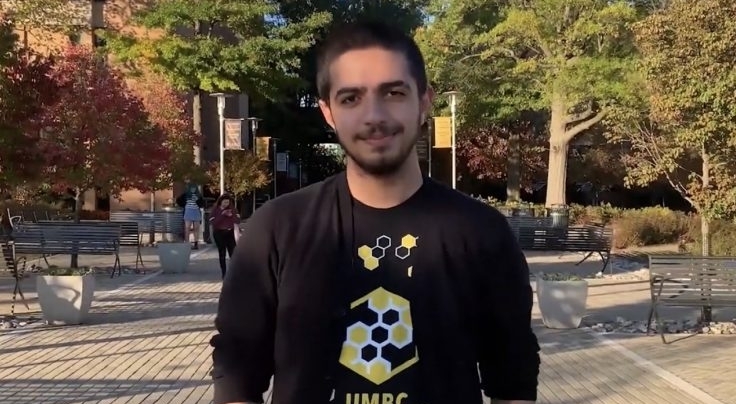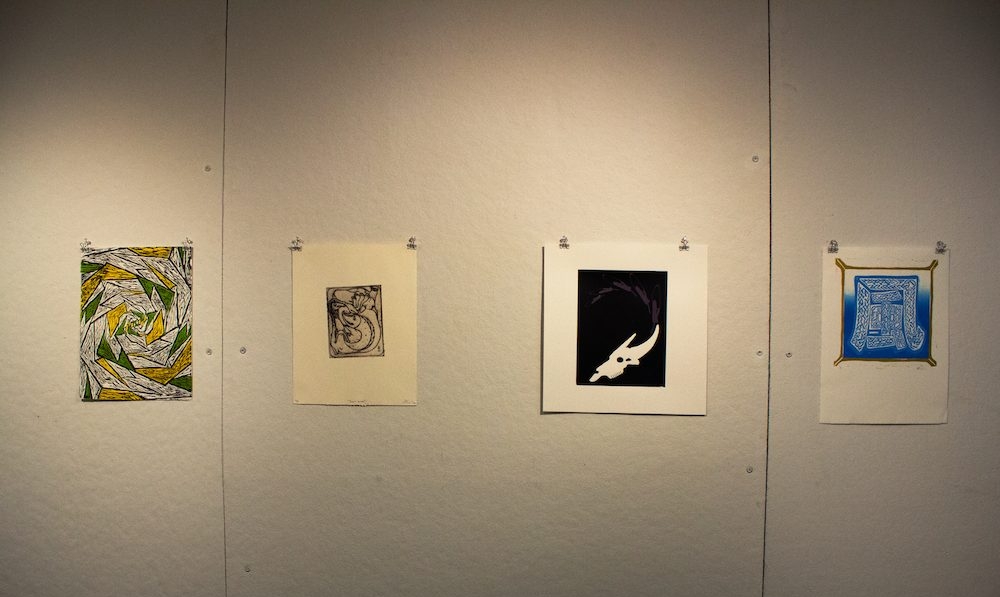On the 1100 block on Fremont Ave. in Baltimore, there is a stable of horses. Around 11 a.m. a group of men load produce onto three horse-drawn carts and one truck. One of them, named Tony, makes a sale before he is even finished hooking his horse, also named Tony, up to the pushcart. The customer buys bananas, and Tony-the-horse’s harness bells jingle in appreciation.
Tony’s route has begun.
Tony-the-man is an Arabber, or a person who sells goods from a horse-drawn wagon or pushcart. Monyet Boice, whose family has been involved with Arabbing for several generations, describes the practice best as: “people who have horses who serve our community.”
While there has been a long history since slavery of African-Americans taking care of horses, the Arabbers formed as many African Americans were migrating north and came to Baltimore during the late 1800s, according to Monyet. Baltimore was home to 25 Arabber stables in the 1960s. Today, there are three main Arabber stables that are still in use.
Arabbers began connecting with people at the ports to bring fruit, vegetables, coal and other items into neighborhoods – Boice described it as a “market on wheels.” Arabbers filled a niche, as historically there were not many markets that African-Americans could access. Today, Arabbers provide fresh items to older adults, people without access to supermarkets and those who cannot easily venture out of their houses.
Tony and Tony
Tony grew up in East and West Baltimore and has five grown children. He has customers – many senior citizens – who depend on him, so he has to make sure he gets to them on his route. But Tony also notes that the “farther I go, the more I sell.” His favorite part about Arabbing is the people, as he puts it: “you never know who you might meet.”
At the beginning of his route, Tony walks alongside the horse and cart and yells out a very distinctive cry to get customers’ attention. On a side street, Tony invites a potential customer to taste a grape before the man buys a few apples and grapes. Then, Tony – the horse – continues onwards, passing by a schoolyard where kids at recess rush towards the horse before being called back.
Soon, the Tonys arrive at the Linden Park Apartments in Bolton Hill. Several seniors appear, coming close to pet the horse and inspect the produce. One older woman remarks that this is the “first time I ever seen a horse this close.”
Tony started Arabbing 20 years ago, which is, according to him, “long enough.” During his route, one man asks when he’s going to retire.
Later, the mobile operation pauses at Nori on West 36th St. in Hampden. This restaurant is a “water hole” – where Tony goes inside to fill up a yellow bucket that rests at the back of the cart. As the horse laps up the water inside of the bucket, a man and woman come out of Nori and converse with Tony. A teen comes by and eagerly pets the horse.
The Community
The Fremont Avenue stable is not the only Arabber stable in Baltimore. The Arabber mosaic on the side of Hollins Market in Southwest Baltimore reveals that you are near the Carleton Street stable. After walking down a side street, you arrive at the stable in Southwest Baltimore. Directly across the street is a pen with six horses in it: Diamond, Molly, Pimp, Savage, Kitty and Bae.
Curtis and Levar stand and talk inside the pen on a cloudy morning in late April. Curtis works nearby, as the Events and Marketing Manager at the Southwest Partnership. He is the grandson of a former Arabber, and has fond childhood memories of caring for the horses at the stables. Levar’s family also has long-standing roots in Arabbing. He is a current Arabber and the stable manager. The sounds of the horses chasing each other, the distant railroad and chirping birds provide a soundtrack to their conversation.
The Arabbing community is very tight and the tradition is often kept in the family. Levar remembers when his grandfather bought him his first team. He started as a helper, but vividly recalls the first time he had his own route. He was free to dictate where he wanted to go, hold money and drive the horse. When Levar’s 20-year-old son was recently killed, the Arabbers did a horse and carriage funeral.
Monyet and Levar talk about how there are fewer Arabbers as the years go on. People don’t carry as much cash on them, which limits how much money Arabbers can make. Traffic and busier streets also make things harder.
Betsey Waters shares this concern. “I worry for the horses, cause people drive like crazy.” She has lived on Arlington Avenue, close to the Carleton Street stable, for 38 years. The Arabbers watched out for her kids in the neighborhood: “they couldn’t get away with anything, because somebody would always be letting us know what they were up to.”
Betsey has seen many Arabbers retire, and worries that not enough younger people are entering the profession. Waters muses that maybe the Arabbers could take on an even larger role in the community, similar to how barbershops are used today. She reflects: “It would be great to see them, to come back again, but I don’t know if we can ever go backwards.”
Betsey reminisces about the times when there was more activity at the Carleton Street stable: “I miss, I miss the sound of the horses returning to the stable every night. You hear the clop, clop, clop – ding a ding a ding.”
Written by Madeline Ross, Political Science Major, Class of 2020
Photo Credit: Curtis Eaddy II.


Comments are closed.